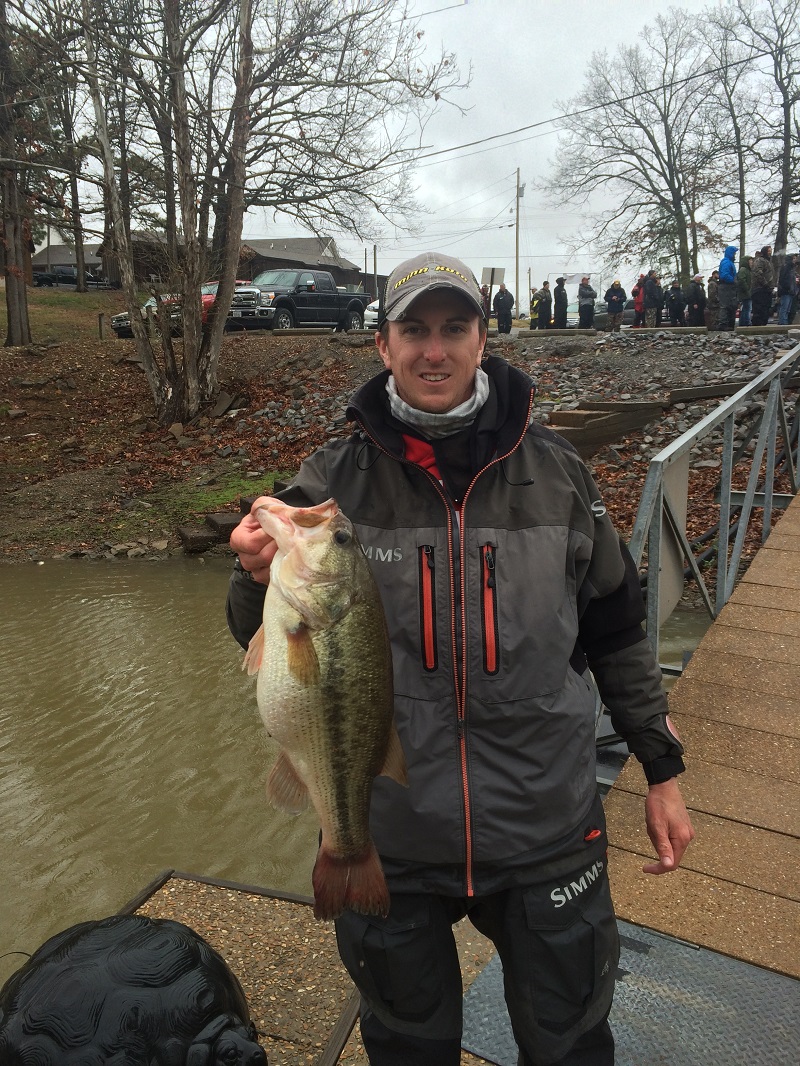 If you are planning on hitting the water to target cold weather largemouth, the main thing you need to keep in mind is that the activity level of a bass is low, but they are still ready and willing to eat!
If you are planning on hitting the water to target cold weather largemouth, the main thing you need to keep in mind is that the activity level of a bass is low, but they are still ready and willing to eat!
To generate strikes out of these lethargic bass you will need to downsize your presentation and slow down your retrieve.
A finesse application that I turn to when fishing cold water, is a shaky head. What makes the shaky head lure so versatile is that you can alter the way in which you fish it depending on the cover and depth you are fishing. If the bass are deep, you can let the jig sink and then just ever so slightly shake it as it is resting on the bottom. This method is very effective when casting to isolated cover, so you are able to keep the bait in the strike zone for the longest amount of time possible. If I’m targeting bass up shallow or bass that have positioned themselves along a transition bank, I’ll drag the jig, with the goal of keeping it in the strike zone for the greatest amount of time possible.
When fishing a shaky head, I’ll fish it on a Wright & McGill 7’2” Victory Pro Carbon spinning rod and pair it with a Victory Pro Carbon 3000 spinning reel that is spooled with 10 lb Seaguar TATSU Fluorocarbon line. With this combination I can make extremely long casts and feel the lightest bite, both of which are critical when fishing for bass in cold water. I like to use the larger sized 3000 spool as it help eliminates line twist and aids in casting distance.
The depth of water and density of the cover I’m fishing will dictate the weight of the shaky head jig I’m using, but my go to size the majority of the time is 3/16 oz. I feel this allows me to make a long cast and maintain a good contact with the bottom, which is important because that is where the fish holding cover I’m targeting is located.
As for the plastics that I’ll rig up on my shaky head, I begin with a Zoom Finesse worm the majority of the time as it gives the bass a nice compact presentation to key in on. With Zoom baits, the plastic is soft enough where the fish will bite down and not let go, but at the same time, you won’t have to be re-rigging on every cast. If I need to increase the size of my presentation, I’ll go with a small creature bait, like the Z-Hog Jr.
Targeting bass in cold water doesn’t mean you need to rely on fishing finesse lures 100 percent of the time, you can fish your normal lures, but just fish them slower than you would other times of the year. When that water is cold and those bass aren’t moving much, they are looking for a big meal when they do want to feed. This is why tying up a jig is still a viable option; you just have to fish it slow.
For a jig, I like to flip a ½ oz black and blue War Eagle Flipping Jig with a Zoom Super Chunk trailer, as this will help draw a reaction strike out of the bass, but also with flipping a heavier jig I can flip that jig farther and cover more water.
When I flip my jig out to the cover I’m fishing, I’ll let it sink all the way to the bottom. Be sure to watch your line on the fall, because a bass may hit your jig on the fall and your line may only twitch a slight bit. Once my bait hits the bottom I just let the rod do the work, just ever so slightly I lift it up and then let it sink.


 Advertising
Advertising